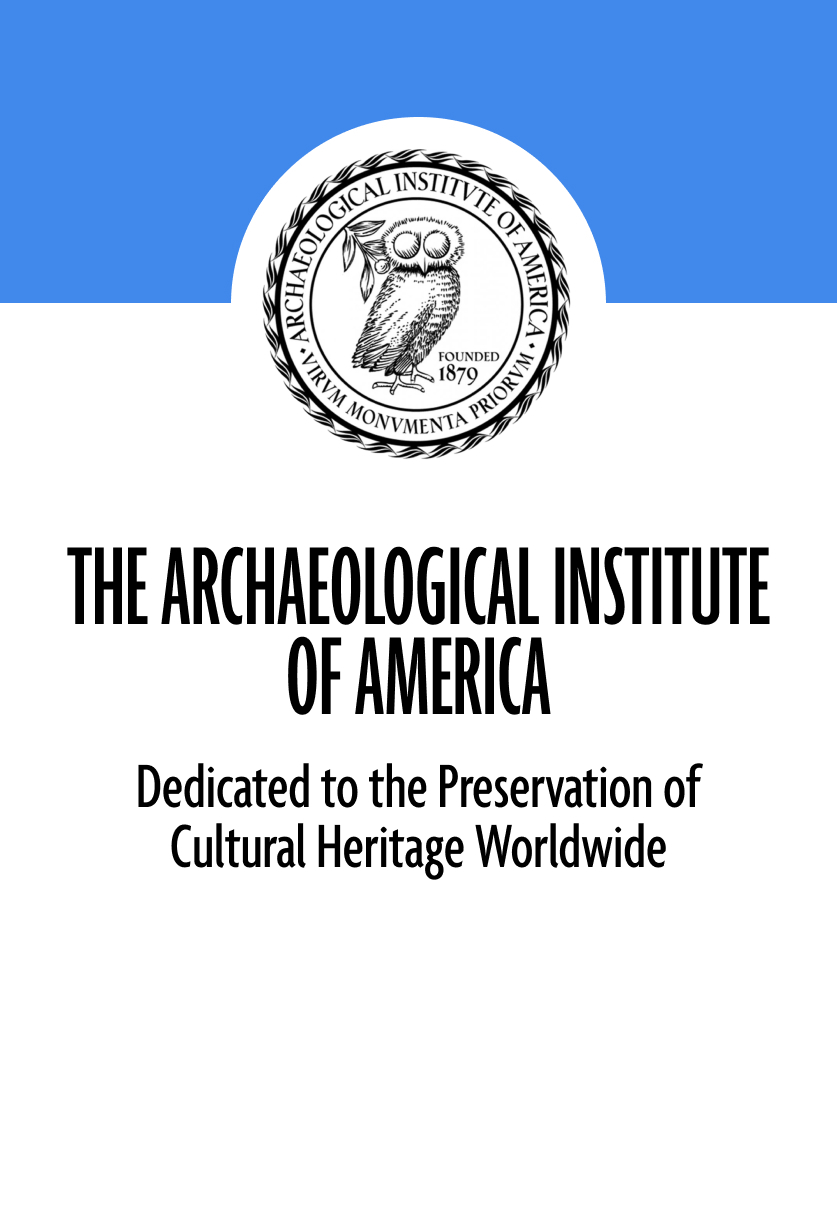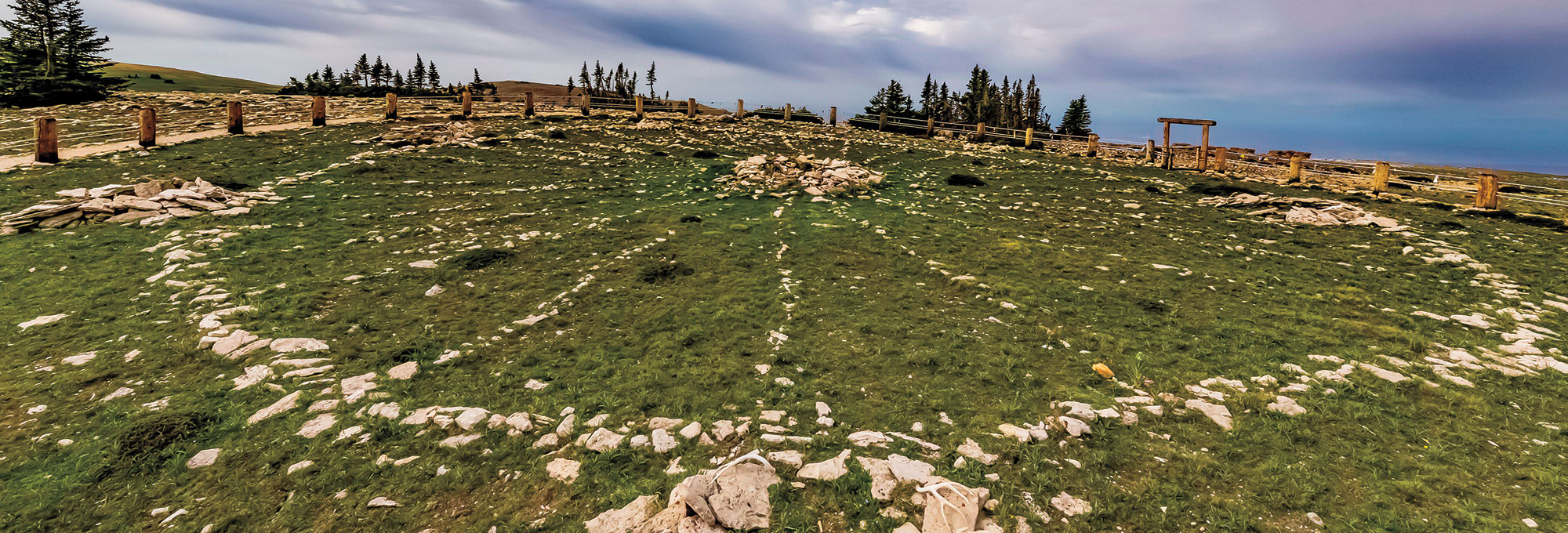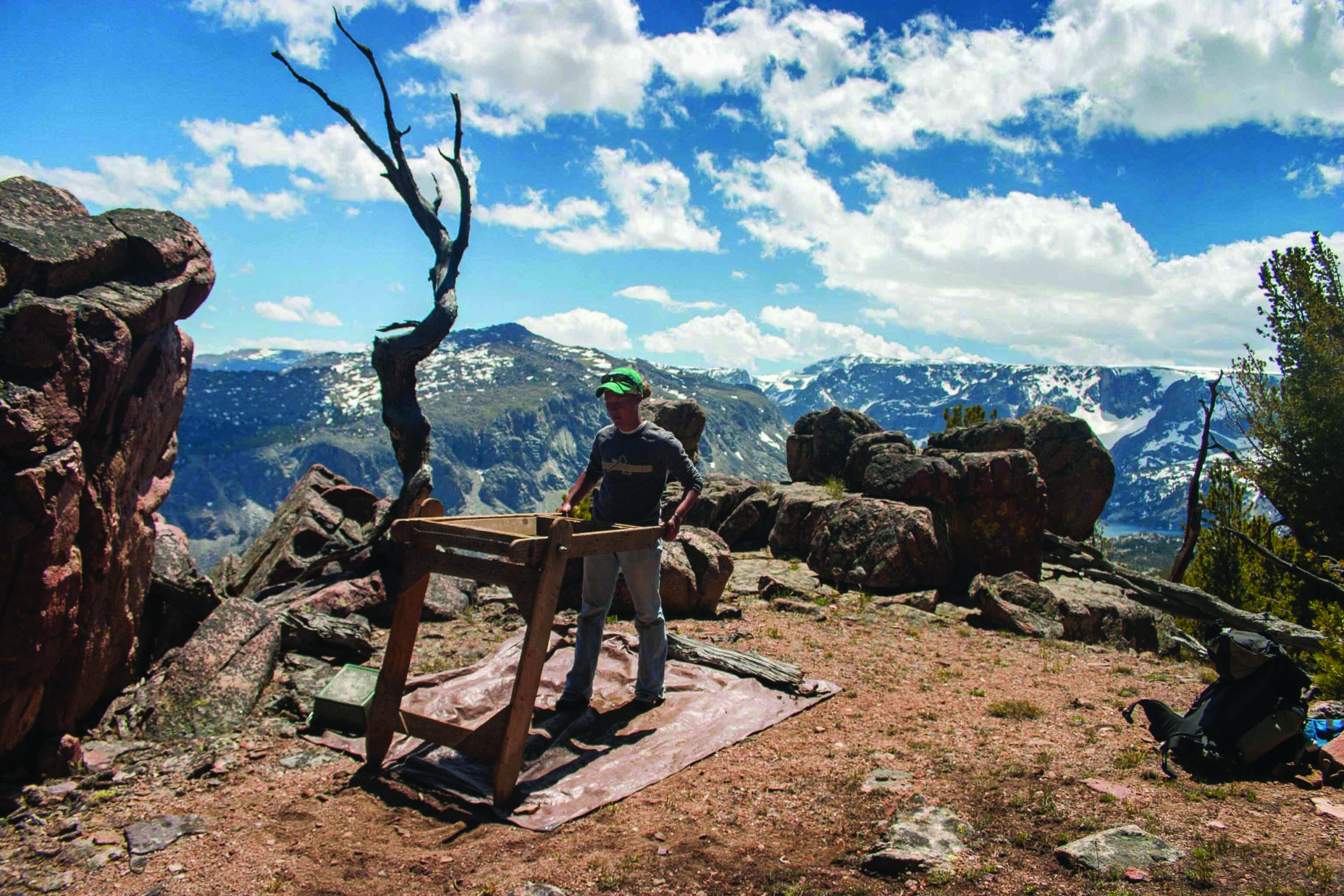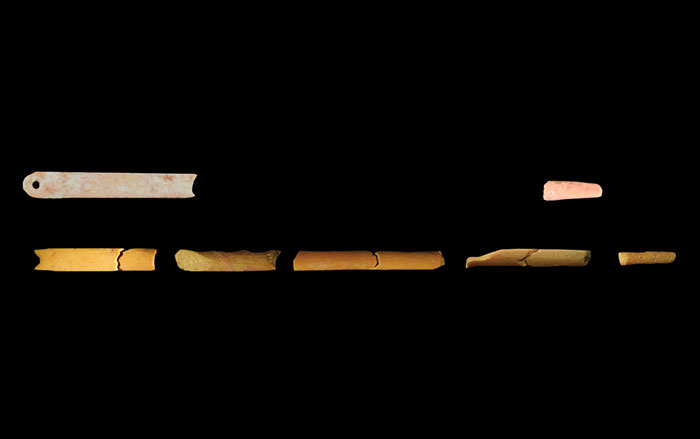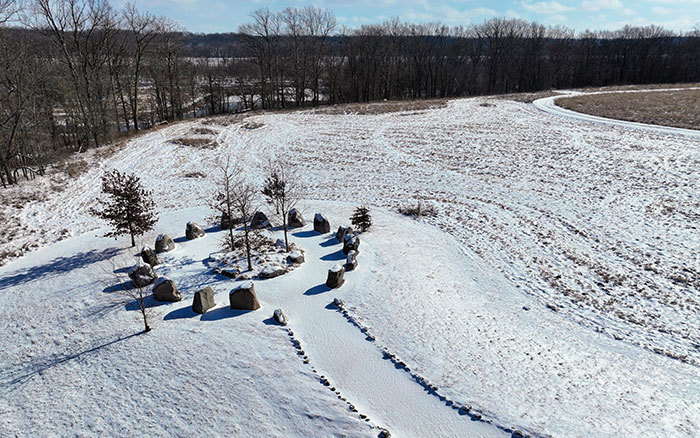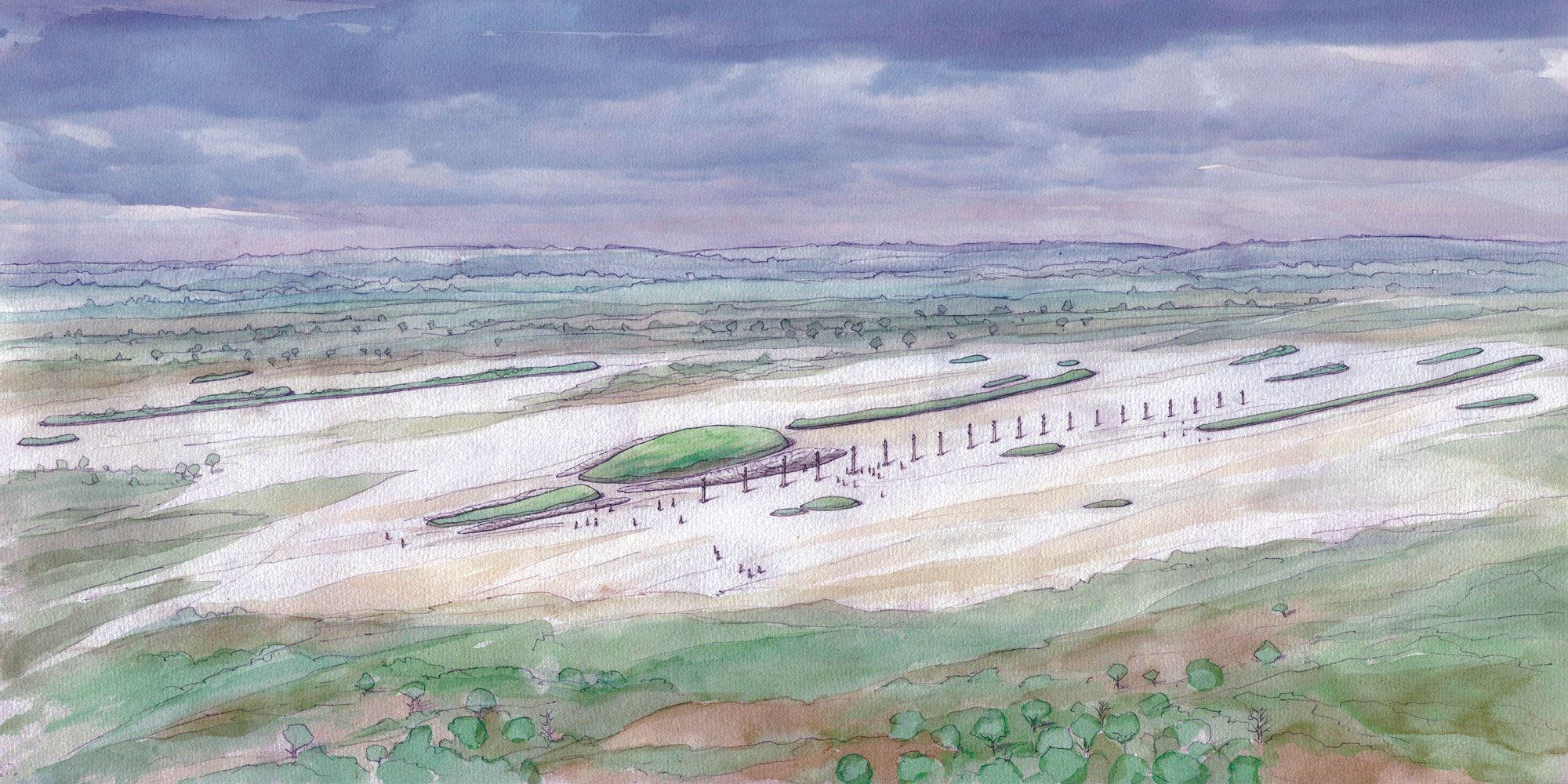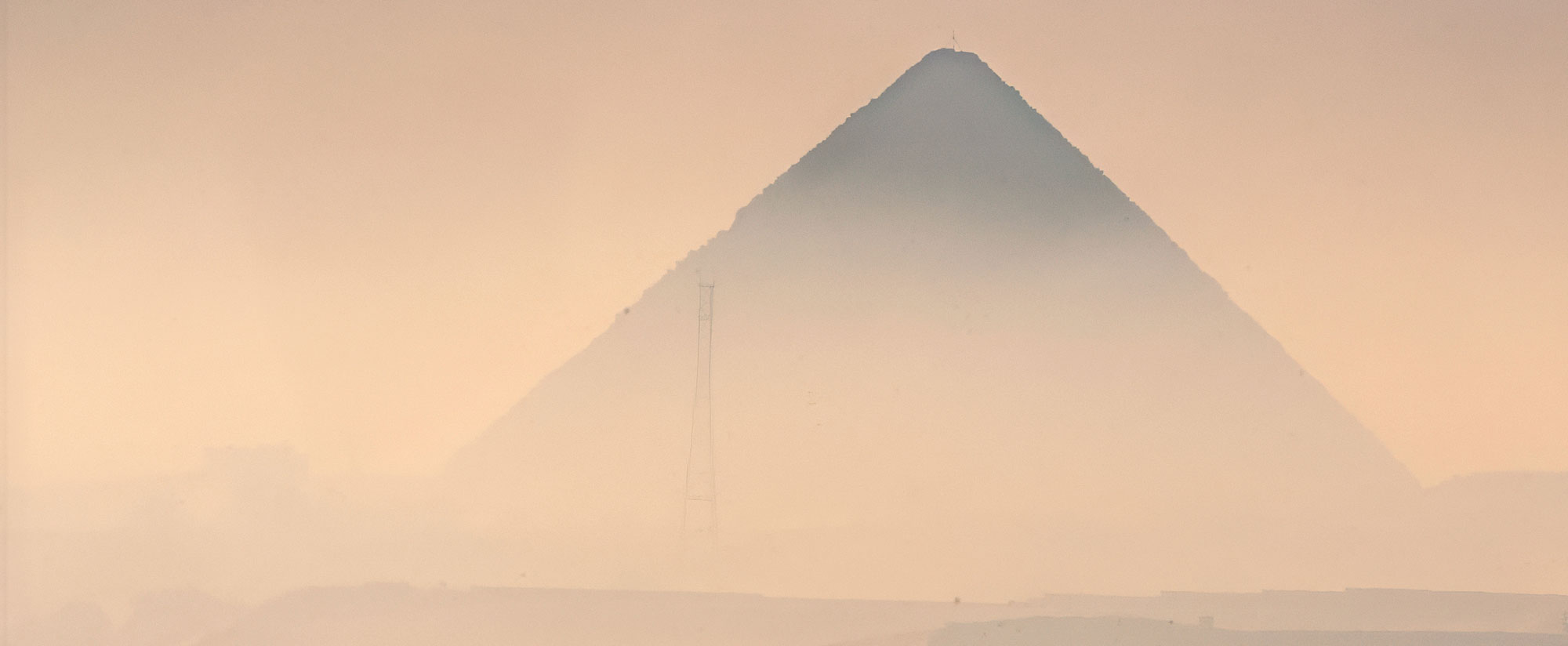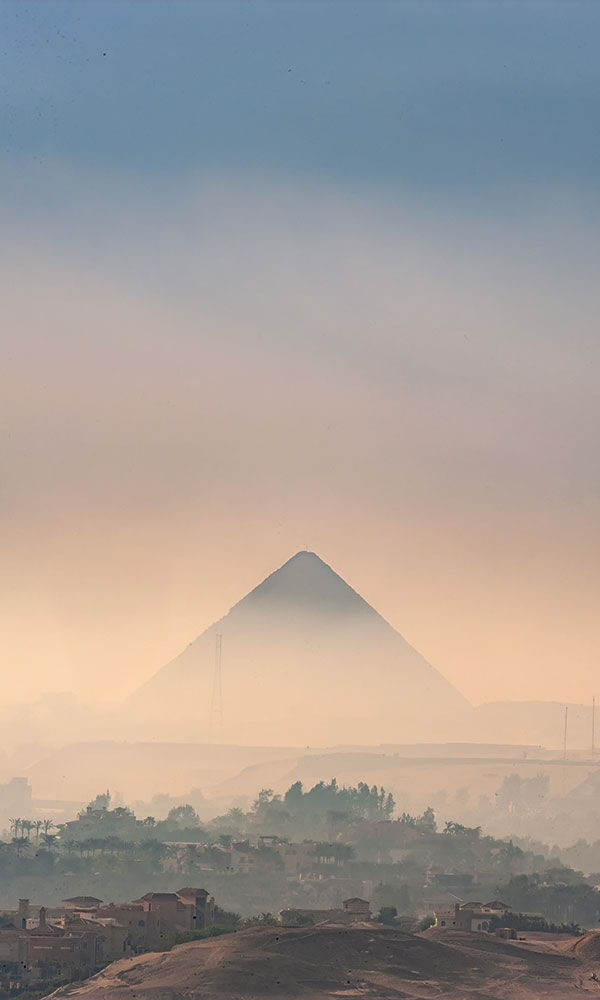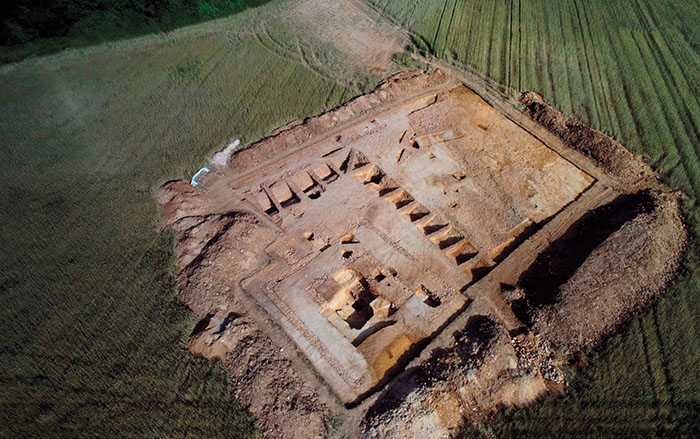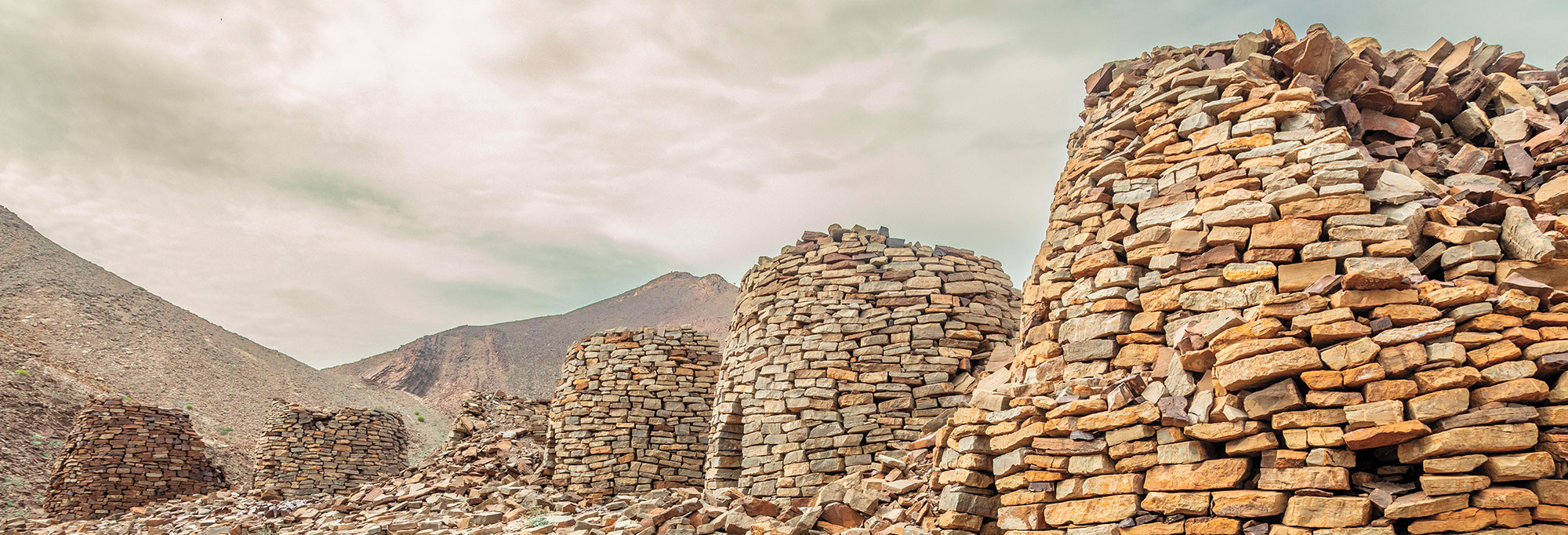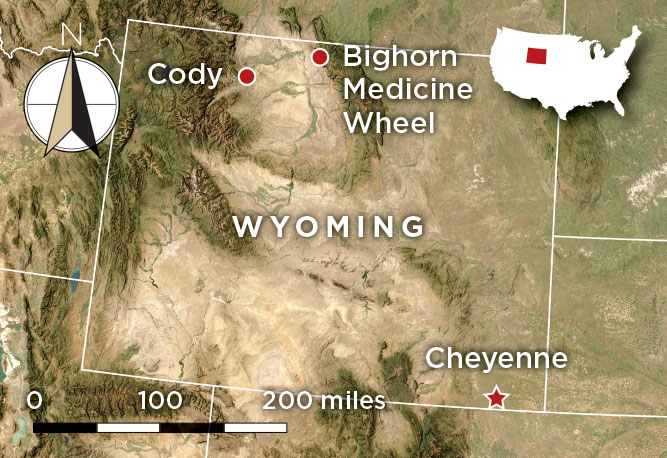
Perched almost 9,700 feet above sea level on Medicine Mountain in Wyoming’s Bighorn Range, the Medicine Wheel is an 80-foot-diameter circular structure made from limestone boulders. Twenty-eight spokes radiate from a central cairn, and six additional cairns are positioned around the wheel’s perimeter. While more than 100 similar circular stone monuments have been found throughout the Rocky Mountains in the United States and Canada, the Medicine Wheel is the best preserved and among the largest. Since the site was first described in 1902 by ethnologist S. C. Simms of the Field Museum, archaeologists have sought to discover when and why the wheel was built. “The Bighorn Mountains have been home to American Indian culture for over 12,000 years,” says retired U.S. Forest Service archaeologist Dave McKee. Despite this long history of human connection to the Bighorn Mountains, excavations at the Medicine Wheel have suggested that it might have been constructed just a few hundred years ago. In the 1950s, researchers from the Wyoming Archaeological Society excavating inside the structure recovered pottery and European glass beads dating to the early nineteenth century. Archaeologists also found wood fragments dating to the 1760s within several cairns, suggesting that tall poles might have once stood inside them. These features have been noted in other medicine wheels.
Some scholars have suggested that the Medicine Wheel was used by precontact Native peoples as an astrological calendar, while others have proposed that it was built as a hoax by French or Russian explorers. It wasn’t until archaeologists began to consider Native American oral histories alongside their research that they arrived at a more accurate understanding of the monument. Both the Shoshone and Crow peoples believe that high-elevation landscapes are sacred places where people can connect with ancestors to receive wisdom about how to navigate the future. Red Plume, a Crow leader of the early nineteenth century, told ethnographers that to seek help fighting European settlers, he spent four days at the center of the Medicine Wheel, from where he was eventually led into the mountain itself by spirits who taught him how to become a powerful warrior and chief. Just as Red Plume sought guidance at the Medicine Wheel in the past, many Native Americans today continue the traditions of their ancestors by hosting spiritual ceremonies among the stones.
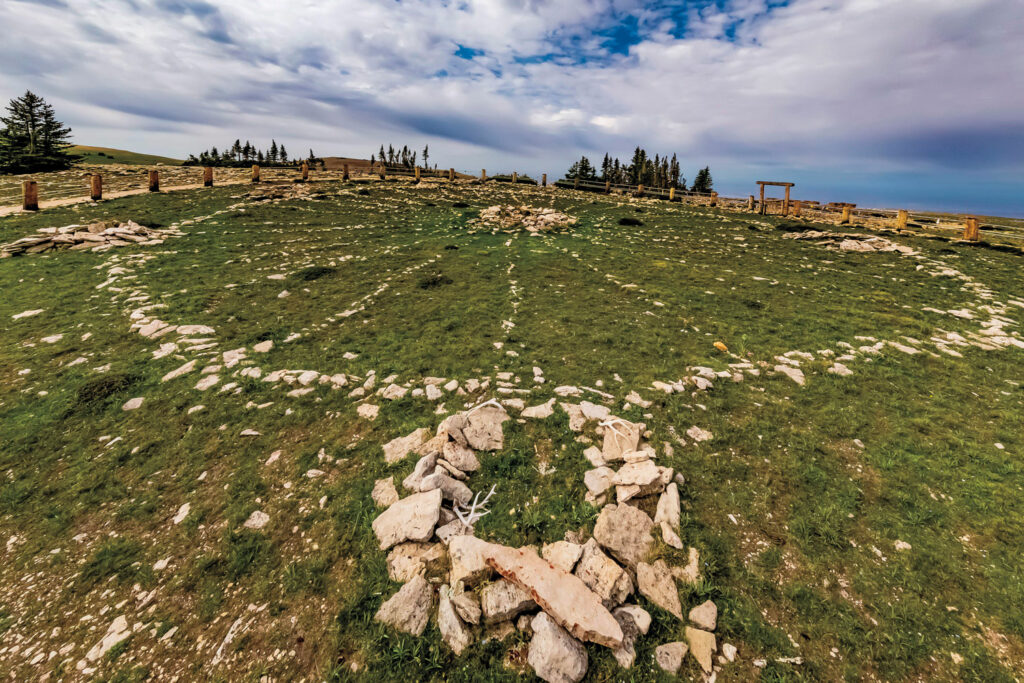
THE SITE
The Medicine Wheel/Medicine Mountain National Historic Landmark consists of more than 4,000 acres of mountain habitat. To reach the Medicine Wheel, visitors walk from a parking lot along a 1.5-mile path guided by interpretive signs about the Native history of the Bighorn Mountains. Rangers are often present to lead tours and can occasionally arrange for people with mobility challenges to drive closer to the site. The monument is sometimes closed during Native American ceremonies, but generally reopens for visitation within an hour. “Providing access for ceremonies ensures continuity of Indigenous cultural practices for current and future generations,” says McKee.
WHILE YOU’RE THERE
The Medicine Wheel is an easy day trip from the town of Cody near the eastern border of Yellowstone National Park. The historic Irma Hotel in downtown Cody was built and owned by famed gunslinger Buffalo Bill, and the town’s Buffalo Bill Center of the West offers an array of exhibits covering local geology, history, and archaeology. For those seeking a more immersive trip into the Bighorn Mountains, the Cloud Peak Wilderness in the southern portion of the range offers several backpacking routes through mountain meadows and snowcapped peaks.
